FOHBC 2016 Sacramento National Antique Bottle Convention & Expo | Educational Seminars
Seminars | Lions Gate Hotel, Club Ballroom A & B, Friday, August 5th, 9:00 am – Noon
Six (6) seminars will be presented by prominent collectors on various collecting topics in the Lions Gate Hotel on Friday morning in Club Ballrooms A & B. The seminars will be:
1. Michael Seeliger with Mike & Kathie Craig – Warner Safe Bottles and Products
2. Steve Ketcham – Red Wing Pottery
3. Thomas Jacobs – The A.W. Cudworth Business Journal
4. John O’Neill – Early California Stoneware
5. Chris Hartz – Early American Scent Bottles
6. John Shroyer – Gold Rush Artifacts.
All photographs are by our official show photographer, Angelina (Gina) Pellegrini unless otherwise noted.
Day 2 | Friday
The FOHBC Educational Seminars immediately followed the FOHBC Membership Meeting Breakfast on the Lion’s Gate Hotel patio. Members and guests could walk into the adjacent Ballroom for a morning of seminars. We had a great selection of topics that seemed to really get excellent comments from the responses we have gathered so far. We will use this space to celebrate and record each of the six seminars. As usual, it was tough to pick out the seminars to attend as they were paired up. Next year at the Springfield National we will be video taping each seminar for historical purposes. A special thanks to Eric McGuire for coordinating all seminars.
Read about Day 1 events: FOHBC Board meeting, American Bottle Auctions Open House, Early Registration, Generals House VIP Reception and the Sacramento Shootout.
Warner and Dr. Charles Craig: Their Connection and the Beginning of the Warner Medicine Empire
Michael Seeliger with Mike & Kathie Craig
Michael Seeliger (red sweater) has been an avid bottle collector since 1969. One of the charter members of the South Central Wisconsin Bottle Club which began in 1971, Michael has been involved in the hobby for over 46 years. His fascination with Warner’s bottles began in 1971 when he found a Warner’s bottle dump just outside of Wisconsin Dells, Wisconsin. After finding two green Animal Cures from London in local Wisconsin shops and the discovery of foreign Warner’s bottles, Michael, with the help of his wife, Alice, decided to categorize Warner’s bottles with his first book on Warner: “H. H. Warner His Company & His Bottles” in 1974. Michael recently released an updated and greatly expanded version of the book in electronic format (see below). It includes the history of Warner, pictures of bottles, collectors, labels, almanacs, signs, and other information on Warner’s life; consisting of over 600 pages of Warner information and is growing steadily. Michael plans to update the book for anyone who purchases an electronic copy adding Warner information as it becomes available.
Michael sold the bulk of his Warner’s collection in 1979 to Jack Craig, Mike Craig’s father. In 2010, the Seeligers and the Craigs became close friends after a visit to view Craig’s collection. Since Jack’s passing, Mike and Kathie (pictured top left) have compiled the most complete Warner’s Collection in the world which continues to grow. Only by having this complete collection available for viewing can one truly begin to understand the complex world of H. H. Warner and his medicine empire. Mike and Kathie Craig have been involved in bottles since the late 1960s when Mike and Jack would dig bottles and attend shows and sales. Kathie has been active as President of the San Jose Antique Bottle Club for 10 years; they hold regular meetings in Santa Clara, California.
The seminar focused on the early Dr. Craig discovery and his bottles and his sale of the cure to Warner. It also told the story of Dr. Craig’s employment with Warner as a formulator, and his eventual dismissal from the H. H. Warner & Co. It also shed light on Dr. Craig and his son’s continued involvement in trying to bring back life to his failing medical cures which were in direct competition with Warner. The seminar showed how Warner prevailed and how Dr. Craig would end up in poverty. The seminar also highlighted some of the more interesting and rare Warner’s bottles which were on display during the show. Michael touched on Warner’s complex product line and his avid desire to have specific bottles for each product which could be trademarked as part of his advertising ingenuity.
The A.W. Cudworth Business Journal
Tom Jacobs
Dr. Thomas Jacobs has always been a collector, starting with natural history such as butterflies and seashells as a child. At age 14, he dug his first antique bottle and with that discovered a passion that will have its 50th anniversary next year. He soon found that collectors “specialized” in one type of bottle and he chose beer bottles because they were found in old picnic areas in his native Marin County and because they were affordable.
That category blossomed into an interest in the history of the brewing and beer bottling industries and collecting everything to do with the trade from photographs to signage. His collection has reached the top of its category and is considered the most complete existing.
Along the way, when material for the beer collection was not forthcoming, he started a side collection of western soda water bottles. These bottles reached much farther back in the embossed bottle history of the west than did beers, and came in colors and crudities not found in beer bottles. This was not a serious collection at the time so he only bought for condition and color but as many years passed that collection grew to the point of also being one of the top collections in the category.
Dr. Jacobs shared information gleaned from the ledger of one early San Francisco soda water bottler and shared bottles from his collection that relate to it.
Early American Scent Bottles
Chris Hartz
Chris Hartz was born and raised in Pittsburgh, Pennsylvania. He graduated with both Bachelor’s and Master’s degrees from California Polytechnic-San Luis Obispo, California. He has worked 38 years in the commercial nuclear energy industry at both operating nuclear power plants and new nuclear facilities under construction; the last 10 of which were in senior leadership positions in Quality Assurance and Engineering. Currently he and his wife Beth live in the central coast of California where Chris continues as a consultant to the nuclear industry.
Chris started collecting antique bottles in late 1969 and has remained a stalwart in the collecting fraternity since then. During this period, Chris has collected at one time or another pontiled sodas, historical flasks, figural bitters, colored pontiled medicines, and since 1993, early American scent bottles. In addition to bottles, he collects early Arts & Crafts pottery, Tiffany desk set pieces, late 19th-early 20th century illustrated children’s books, and guitars.
Early California Stoneware
John O’Neill
John O’Neill is a native Californian born in San Francisco and raised on the Peninsula, and currently lives in Belmont, California with his wife Cheri. John attended the United States Military Academy at West Point, New York and completed his education at Santa Clara University in 1979. He currently is the Senior Managing Director of the San Francisco Bay Area office for Risk Strategies Company, a top 25 national insurance brokerage firm headquartered in Boston, Massachusetts. His passion for western glass and pottery is tied to his love of California history. “Collecting has always been in my blood, and I believe that someday it will be discovered to be what it truly is, a genetic mutation and a permitted disability under Obama Care. Until that day comes, I will continue to act in an irrational fashion overspending on all things glass or of interest to me.” John has been a past President of the San Jose Antique Bottle Collectors Association and the now defunct Peninsula Antique Bottle Collectors Association.
His collecting began at an early age, when bottles could still be found on the ground in the Santa Cruz Mountains. He was hooked after he read John C. Tibbitts’ classic read, “How to Collect Antique Bottles.” San Francisco was the place to be, and as soon as he got his driver’s learners permit, he would pack the tools and look for construction sites in San Francisco. Sometimes he found bottles, but a lot of the time he did not, but made great friendships, many of which continue to this day.
California Pottery is a relatively unknown area of collecting and research. We do know that many of the eastern stoneware manufacturers had employees that ventured west at the time of the Gold Rush and these descendants led to the founding of many of the early West Coast potteries such as T. Gaffney, J. W. Orr, West & Company, San Jose Pottery, Petaluma Pottery, Napa Pottery and Daniel Brannan’s San Antonio Pottery (the brother of Sam Brannan, considered by many to be California’s first millionaire, whose fortunes turned ugly, resulting in bankruptcy, divorce and alcoholism, he was probably relieved (no pun intended) when his bowels became inflamed and he died at age 70 on Sunday, May 5, 1889). John’s talk illuminated the relative rarity of these pottery vessels, the history behind them.
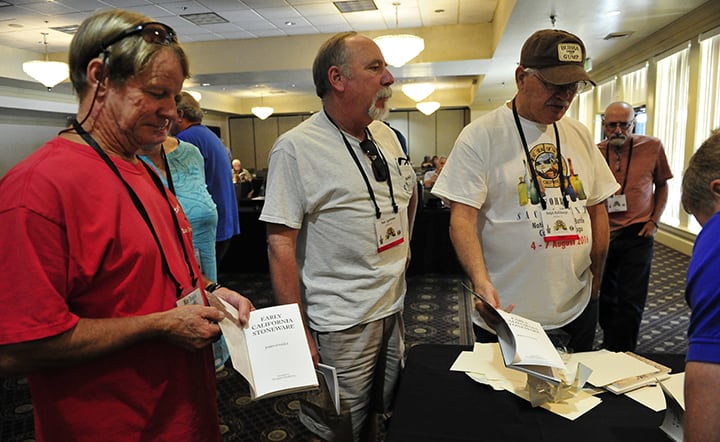
Early California Stoneware book signing. Left to right: Kim Bakke, Tom Spellman and Ralph Hollibaugh.
Red Wing Advertising Stoneware
Steve Ketcham
Steve Ketcham, FOHBC Director-at-Large, began collecting bottles in 1967. He is a charter member of the North Star Historical Bottle Association and has served as club president, treasurer, and show chairman. A life member of the Federation, he sat on the FOHBC board from 1982-1998 and served as Federation president from 1982-1984. He returned to the FOHBC board in 2014.
Steve’s collecting interests include all types of early American bottles and flasks, antique advertising, and Red Wing stoneware. He is on the Red Wing Collectors Society Foundation board, a group that oversees the Red Wing Pottery Museum. Steve and his wife Chris are retired teachers and live near Minneapolis, Minnesota.
Soon after beginning his pursuit of early bottles, Steve noticed that some stoneware jugs were stamped with the same names found on the bottles produced for local liquor dealers, grocers, and other merchants. Many of those jugs were bottom stamped with the name of one of the potteries of Red Wing, Minnesota.
It was no surprise that such stoneware would attract his attention. Steve’s mother, great-grandfather, and two great uncles worked at the various Red Wing potteries, and Steve frequently visited friends and family in Red Wing as he was growing up. In addition, Red Wing dishes, mixing bowls, and flowerpots were an integral part of the Ketcham household when Steve was young. Today, several early family pieces produced at the potteries reside in the Ketcham collection.
One remarkable aspect of the Red Wing story is the broad reach of the Red Wing companies. They produced dozens of different stoneware advertising pieces, including fruit jars, churns, water coolers, butter crocks, serving pitchers, and liquor jugs. Such pieces were made for merchants in dozens of states spanning as far east as Indiana and as far west as California, Utah, Oregon, and Washington. As part of his presentation, Steve shared examples of Red Wing advertising stoneware from across the country. A few nice examples were also presented from California collections.
Gold Rush Artifacts
John Shroyer
John Shroyer is a native Californian who was born in Santa Monica and raised in Belmont, which is 25 miles south of San Francisco. He has lived on the San Francisco Peninsula since the age of 10, and he currently lives in Redwood City for the past 30 years where he has raised his three sons with his wife, Jane. Since 1977, he has worked in real estate sales on the peninsula, and he currently works for Today Sotheby’s International in San Carlos.
He says he was bitten by the “bottle bug” in 1968 at the age of 12. It was then that he found his first bottle dump on the property of an old homestead near his home. Around this time his parents shared newspaper articles with him that were written about the discovery of what the construction workers were finding from 1850s California Gold Rush as they were building the Bay Area Rapid Transit (BART) that runs down San Francisco’s Market Street. They dug up abandoned ships, bottles and other artifacts that completely fascinated him. His dad would drive him to the city, and they would follow the dump trucks to the landfill where they would dump the dirt. They were both amazed as they watched the bottles roll out of the trucks. After the trucks left, they would dig through the piles finding pontiled inks, sodas, pickles, brass lamps, coins, pottery, miner’s belt buckles and gold coins! It was truly a gold rush that he never will forget. John is still digging to this day with the same friends from his teens. “We all continue to have the same enthusiasm as we did when we were young, but the holes are getting a bit harder to dig as our aging backs remind us, that our “bottlelogical clocks are ticking,” to quote my dear friend Duke.”
The seminar attendees joined John for his infamous tales of the buried gold rush ships and the treasures found within their skeletons.
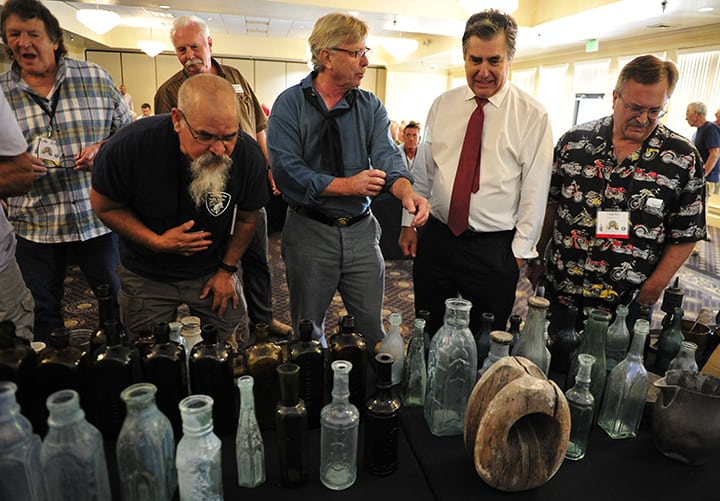
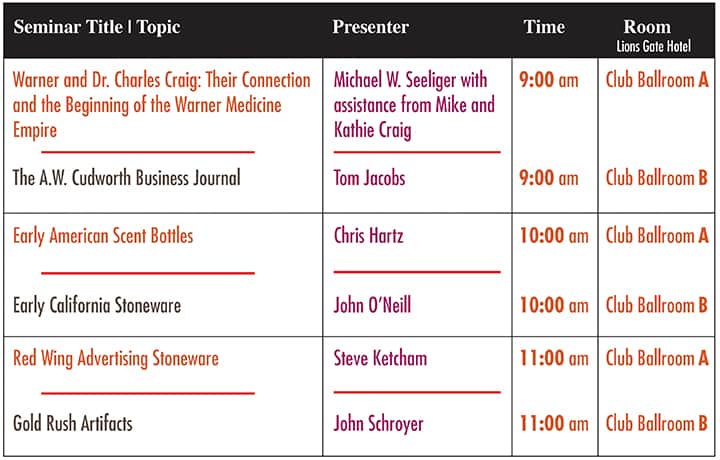
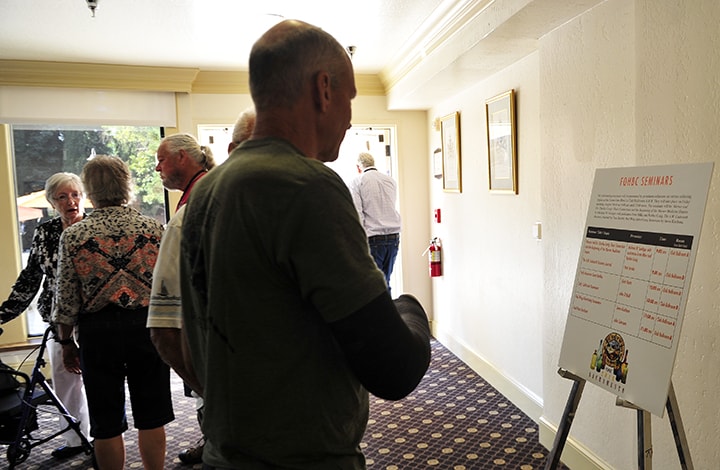
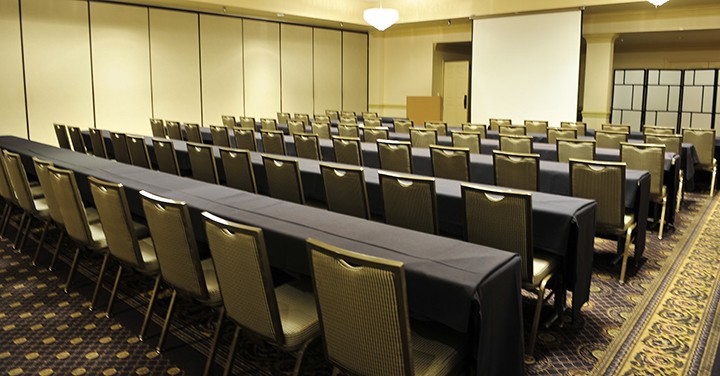
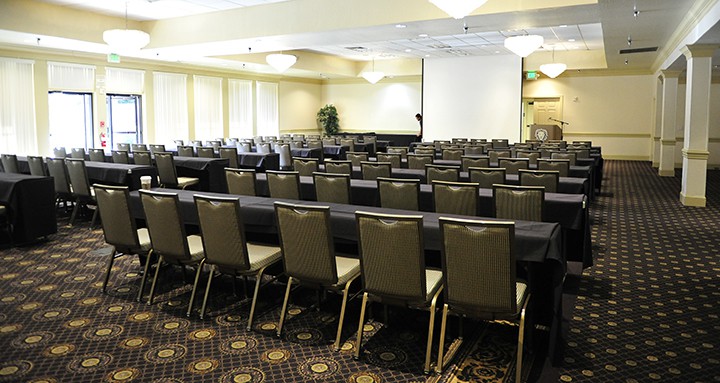
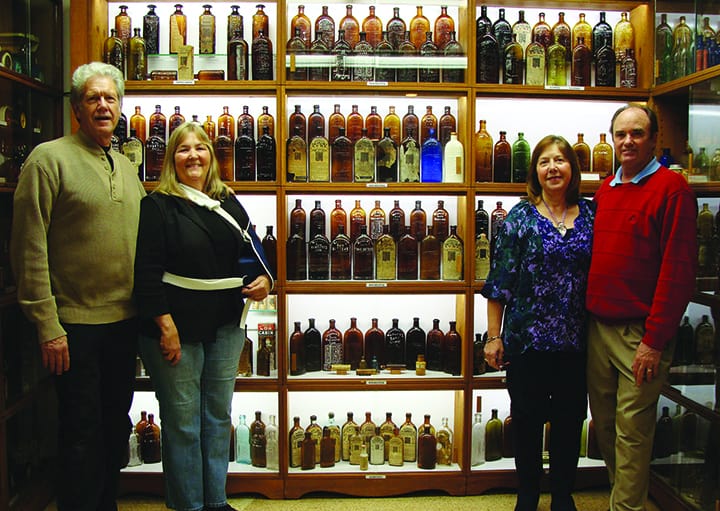
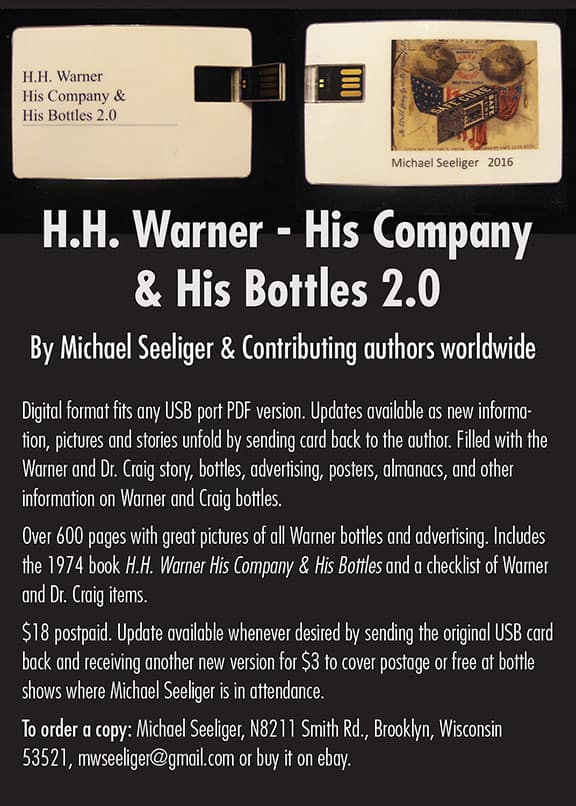
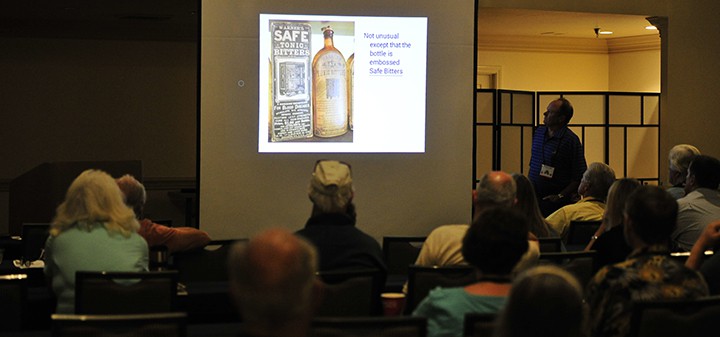
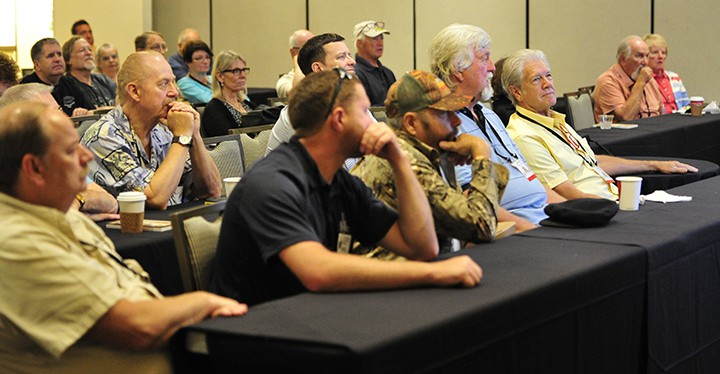
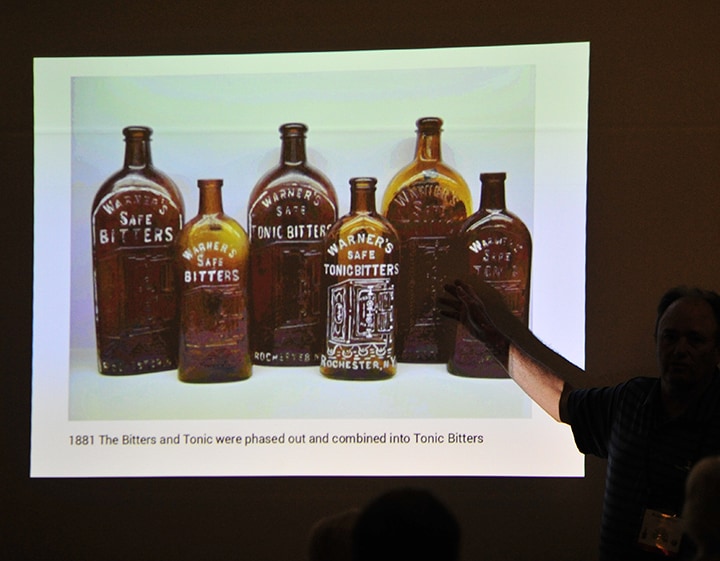
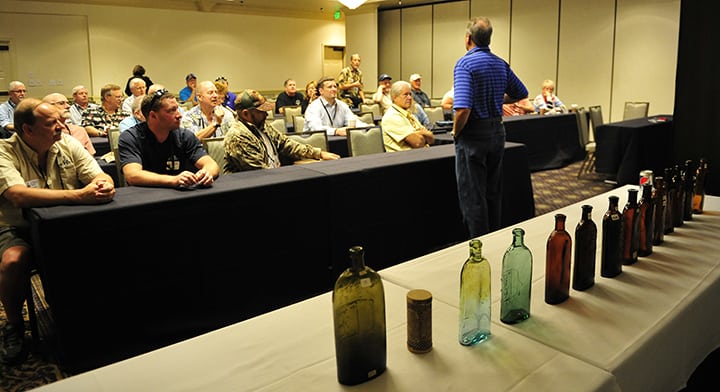
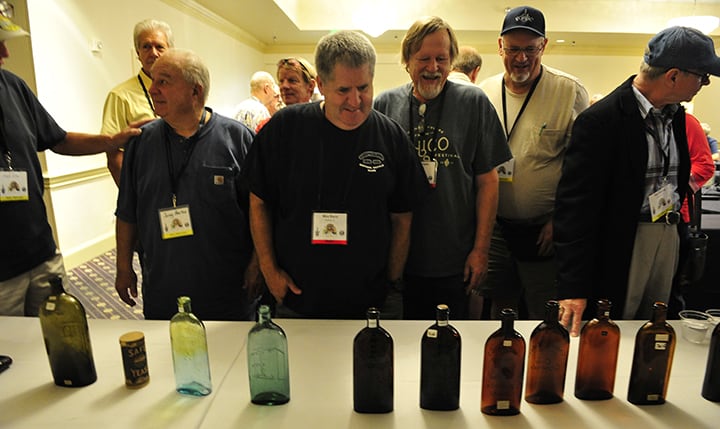
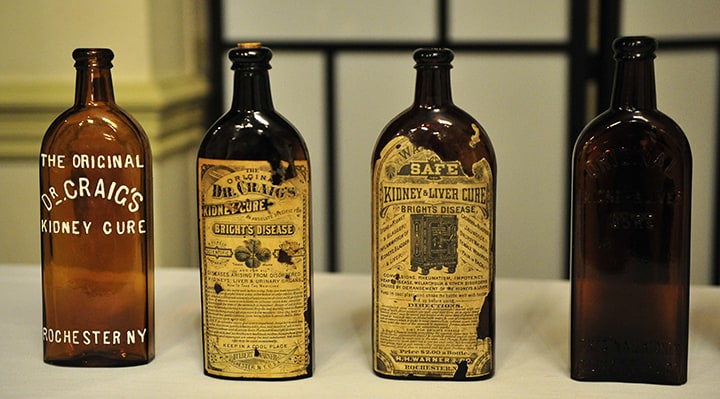
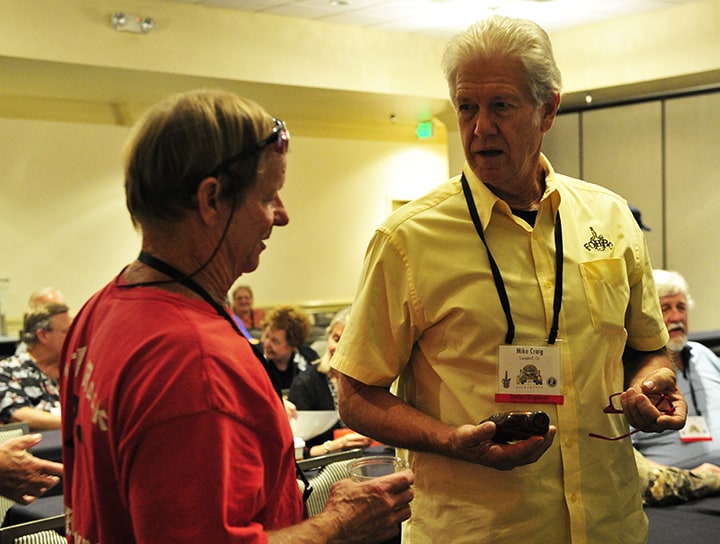
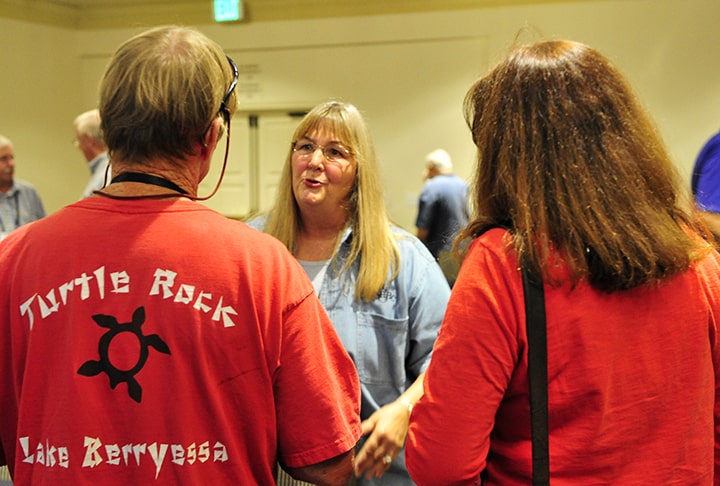
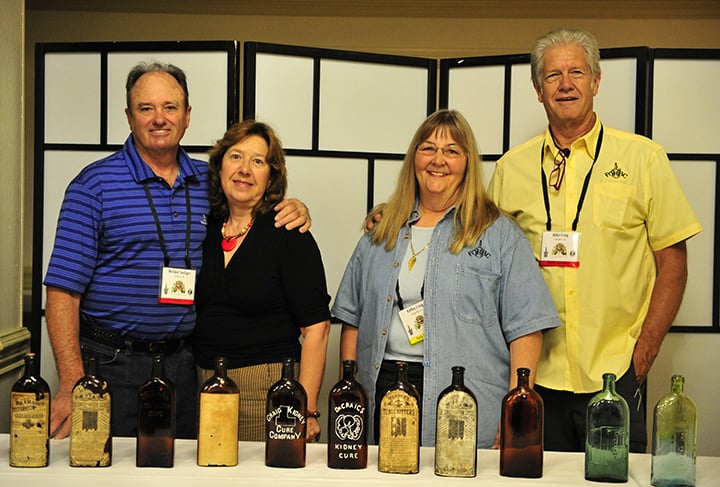
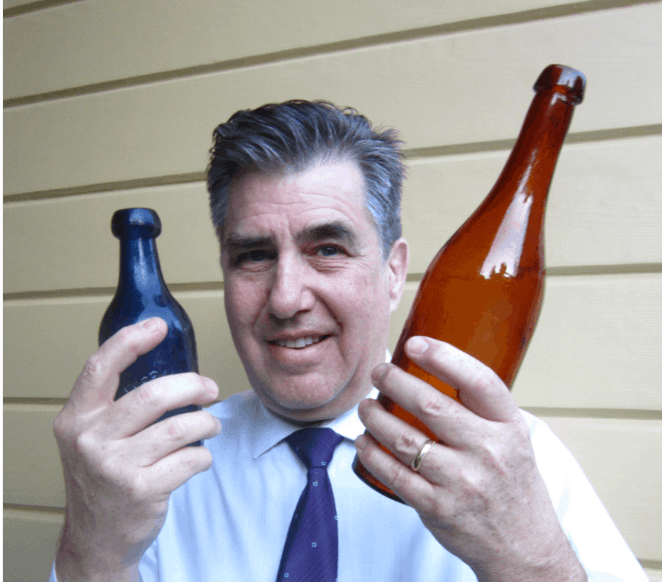
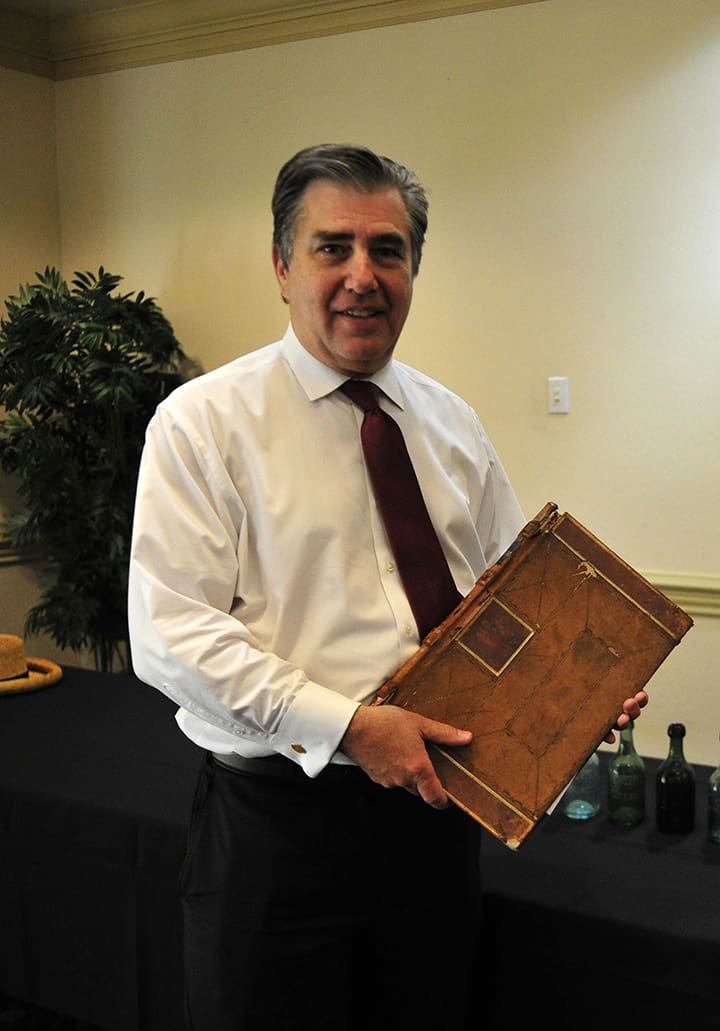
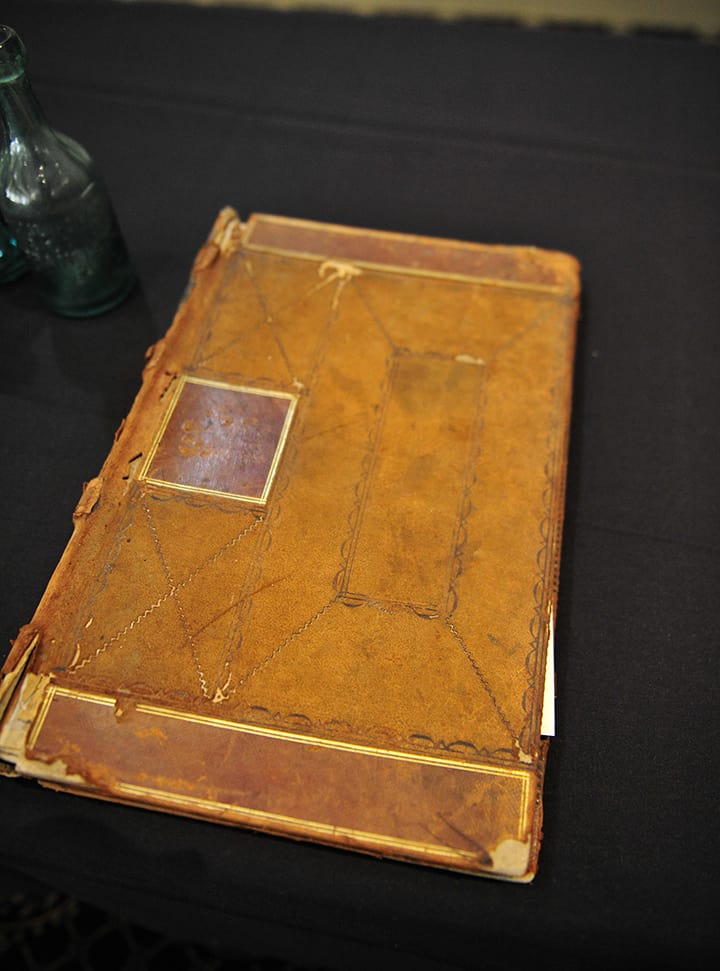
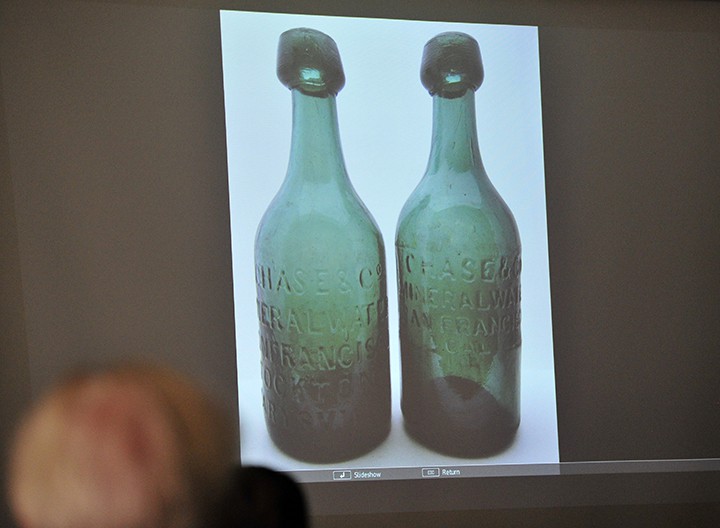
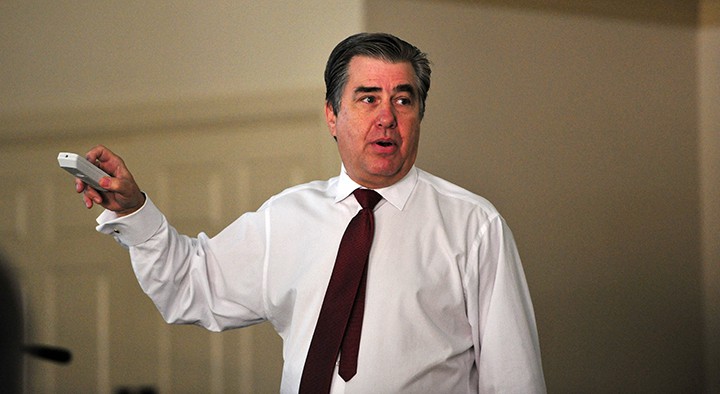
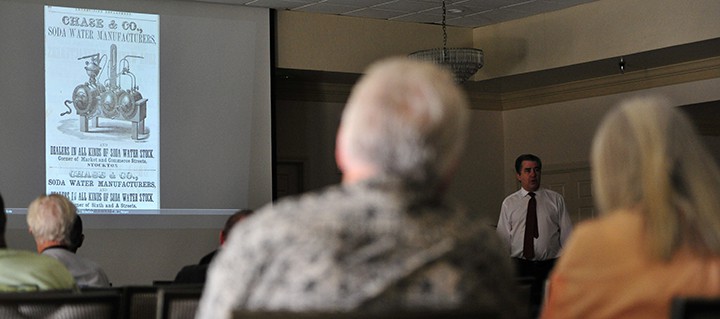
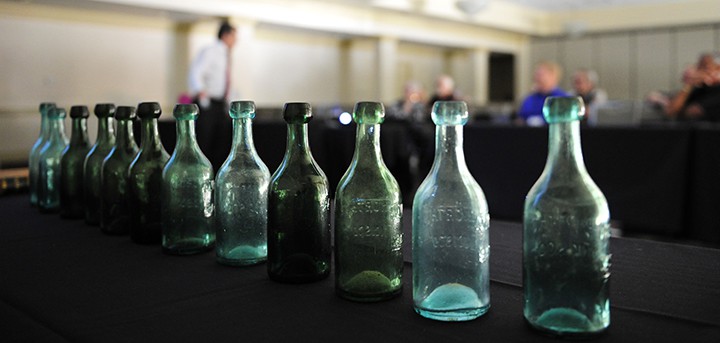
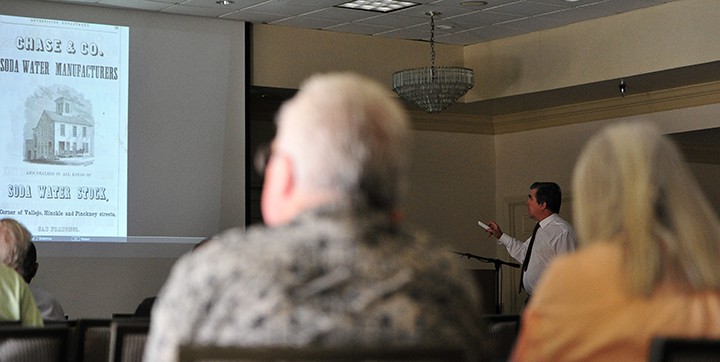
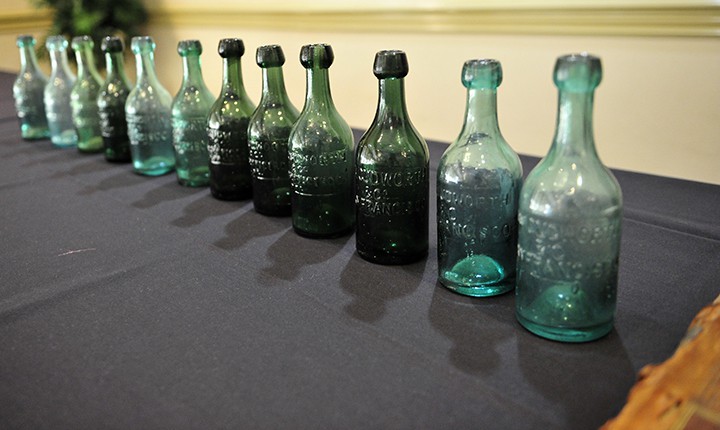

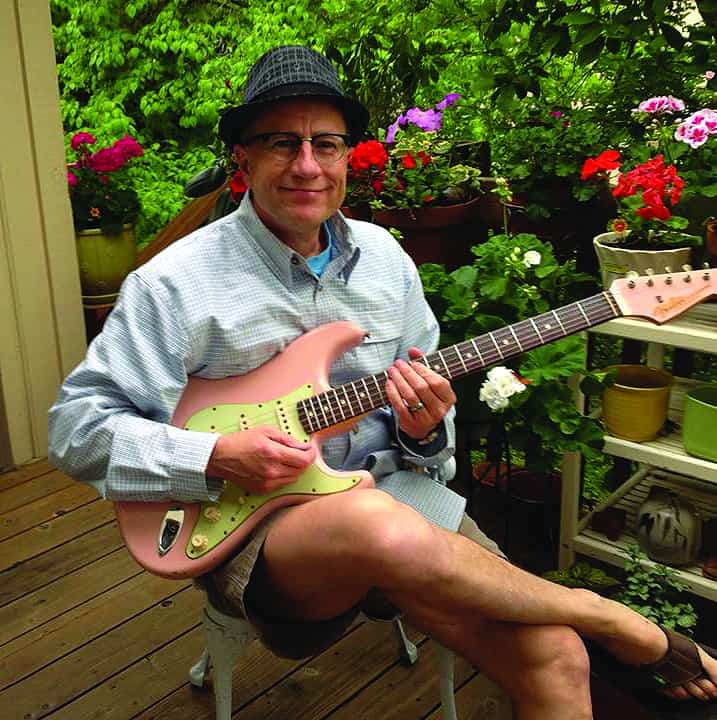
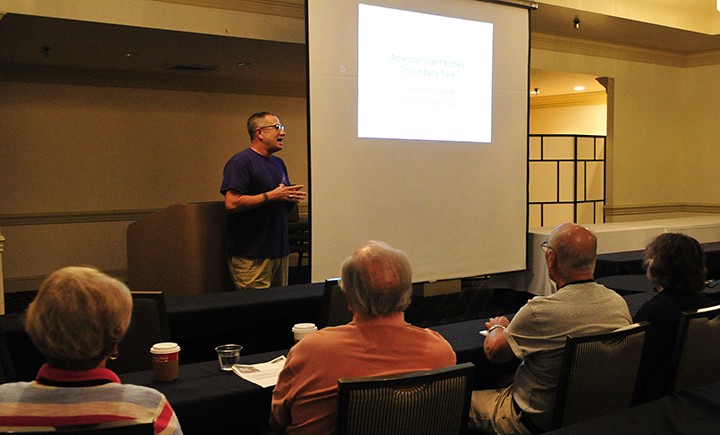
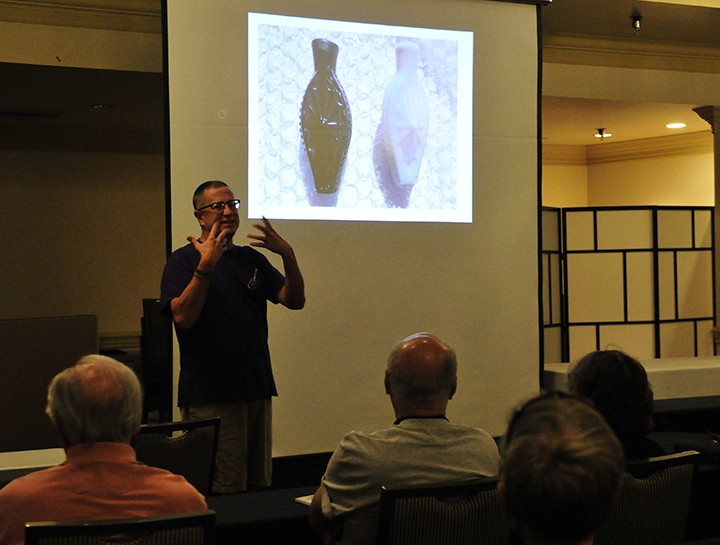
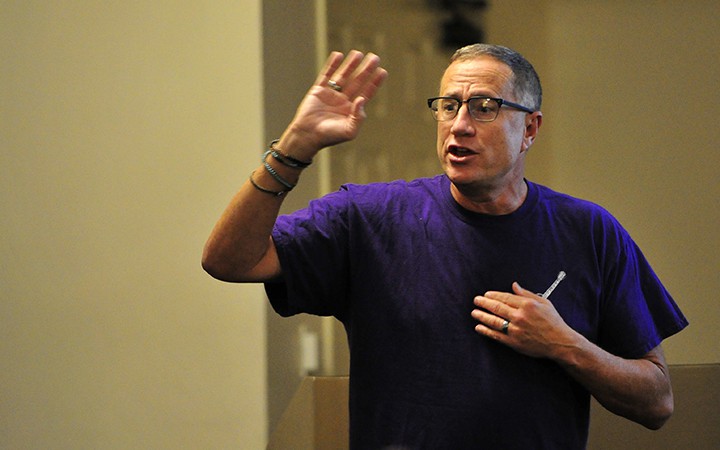
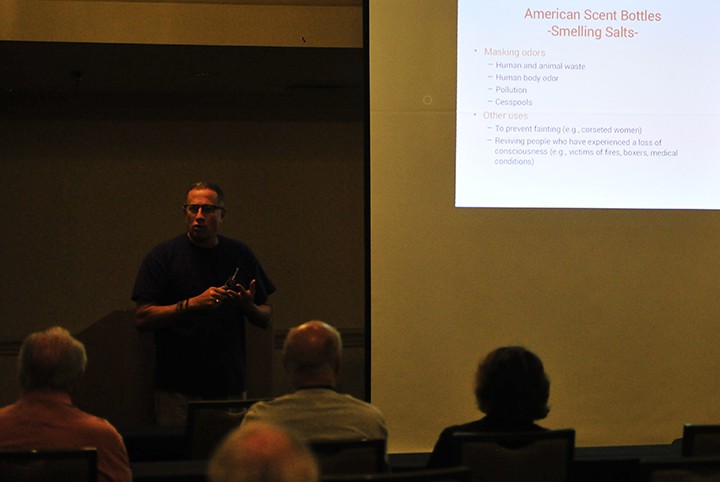
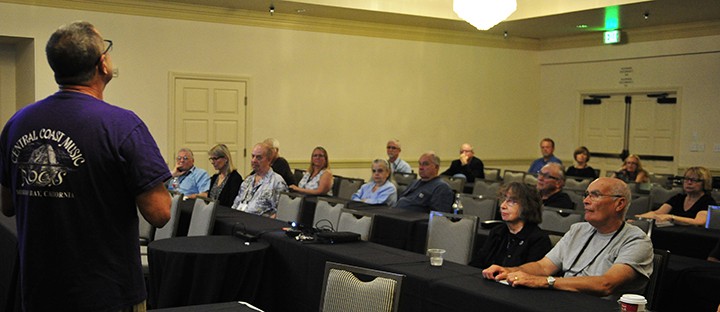
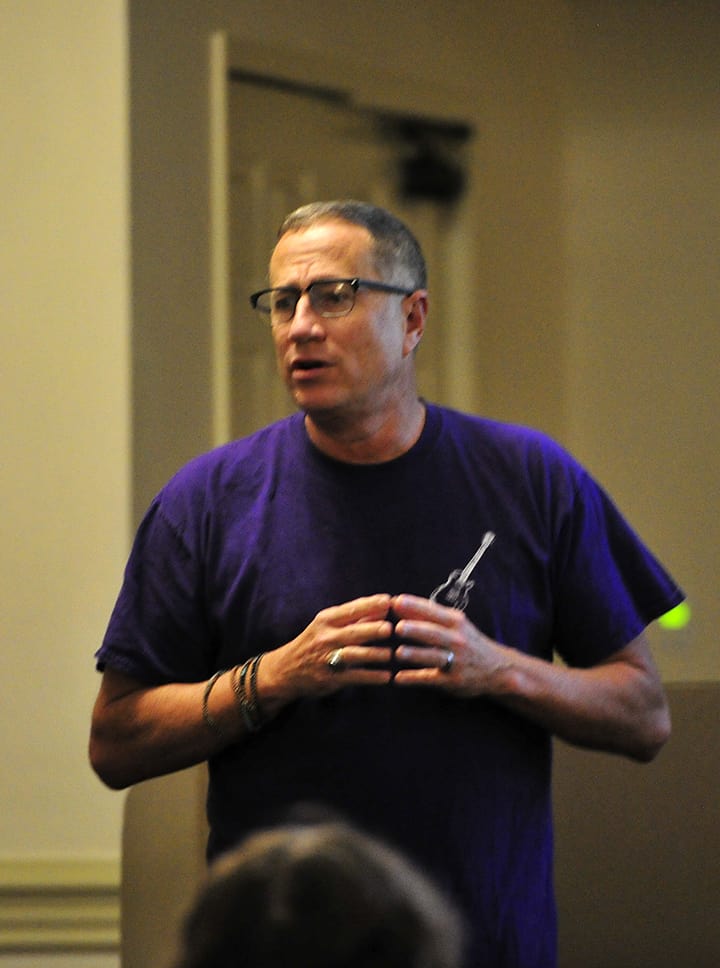
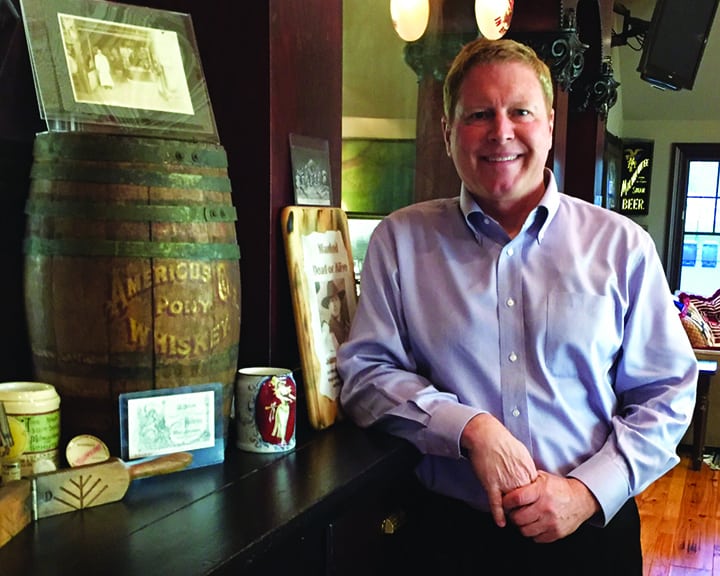
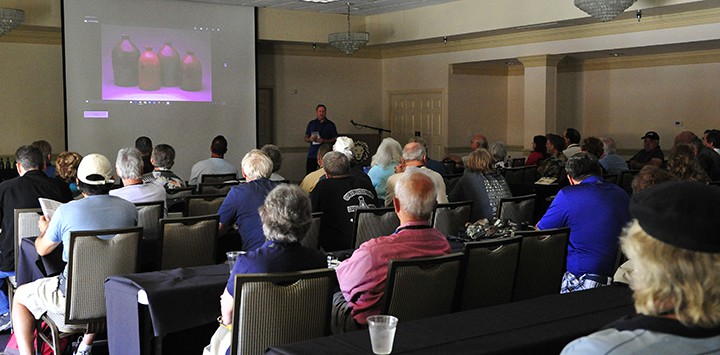
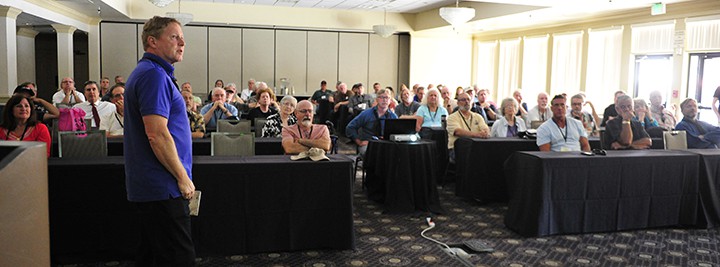
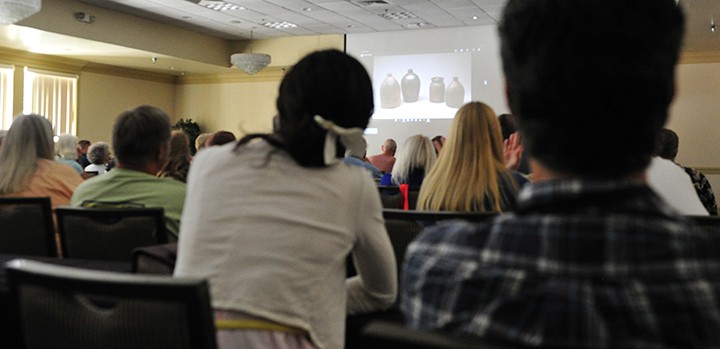
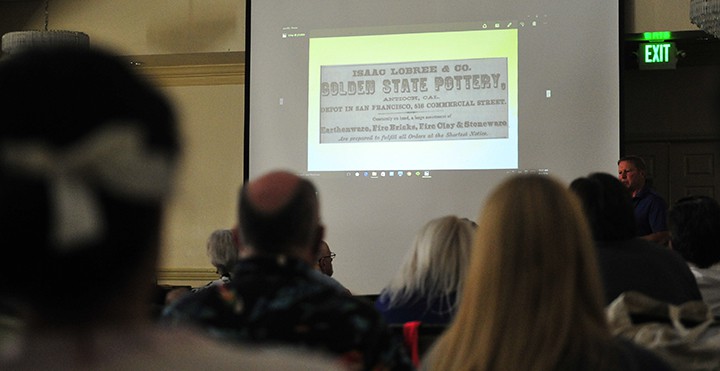
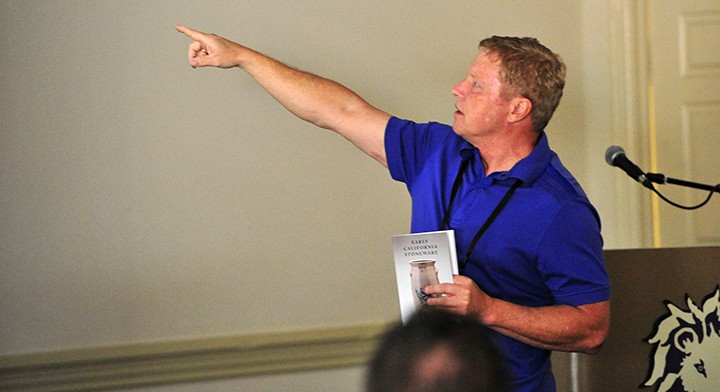
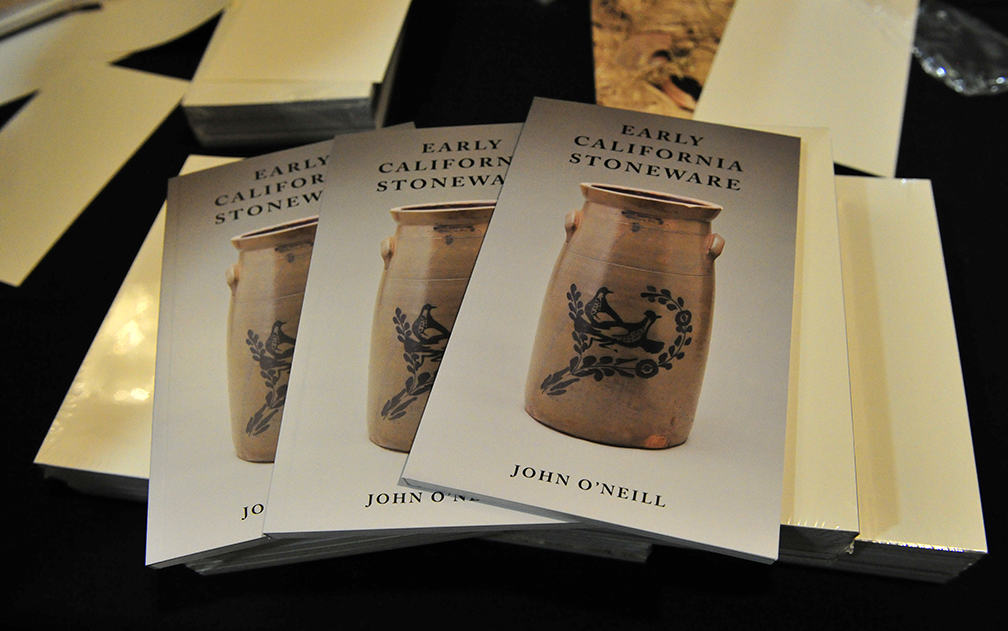
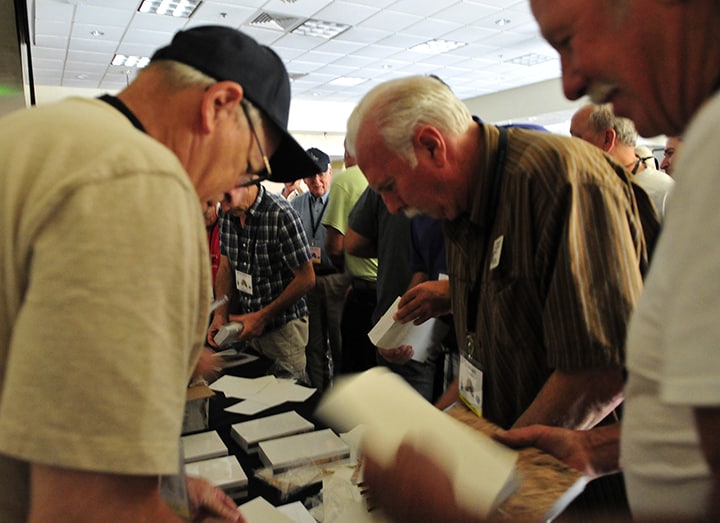
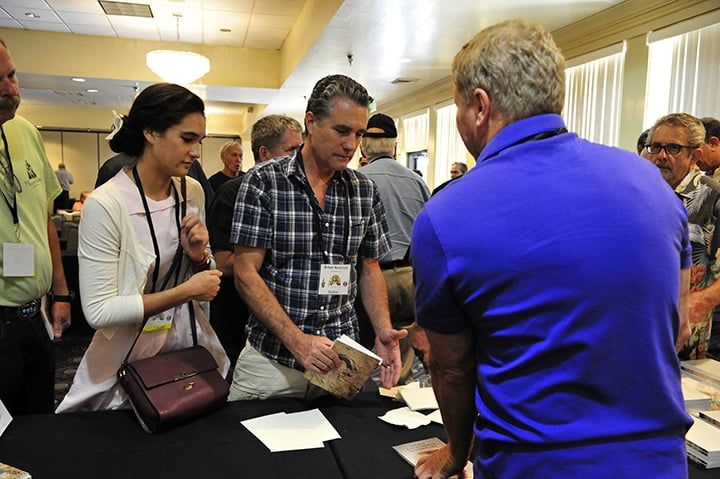
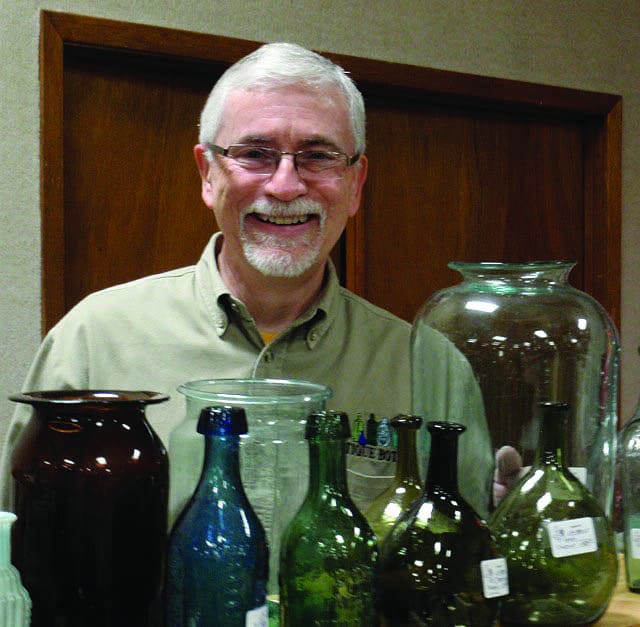
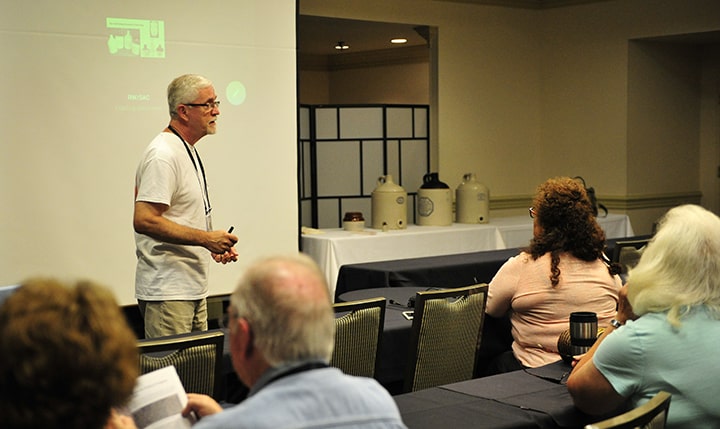
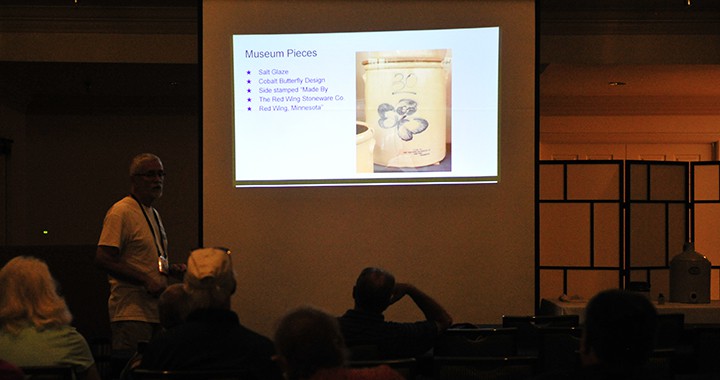
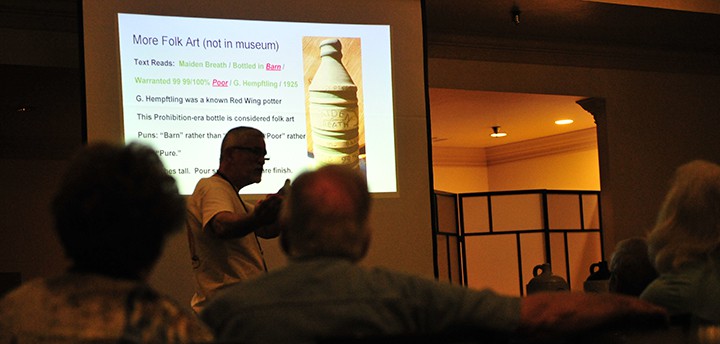
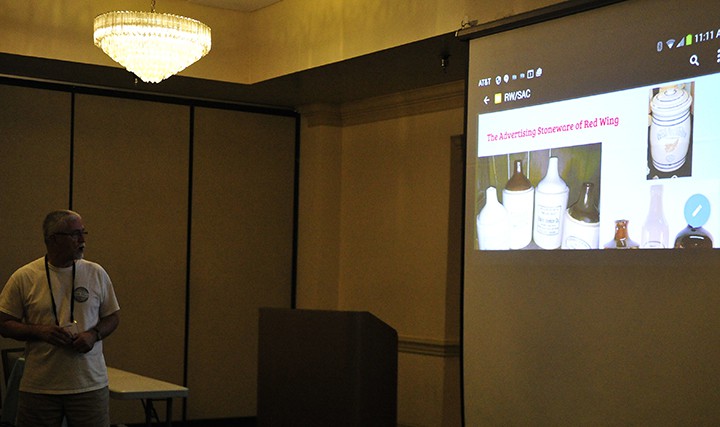
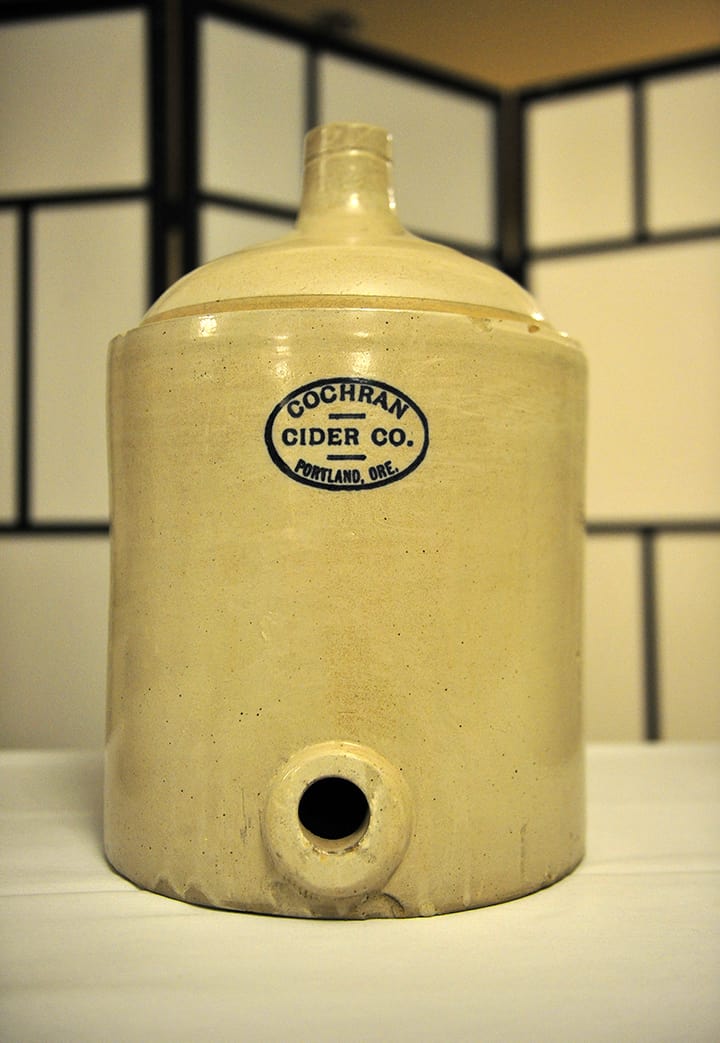
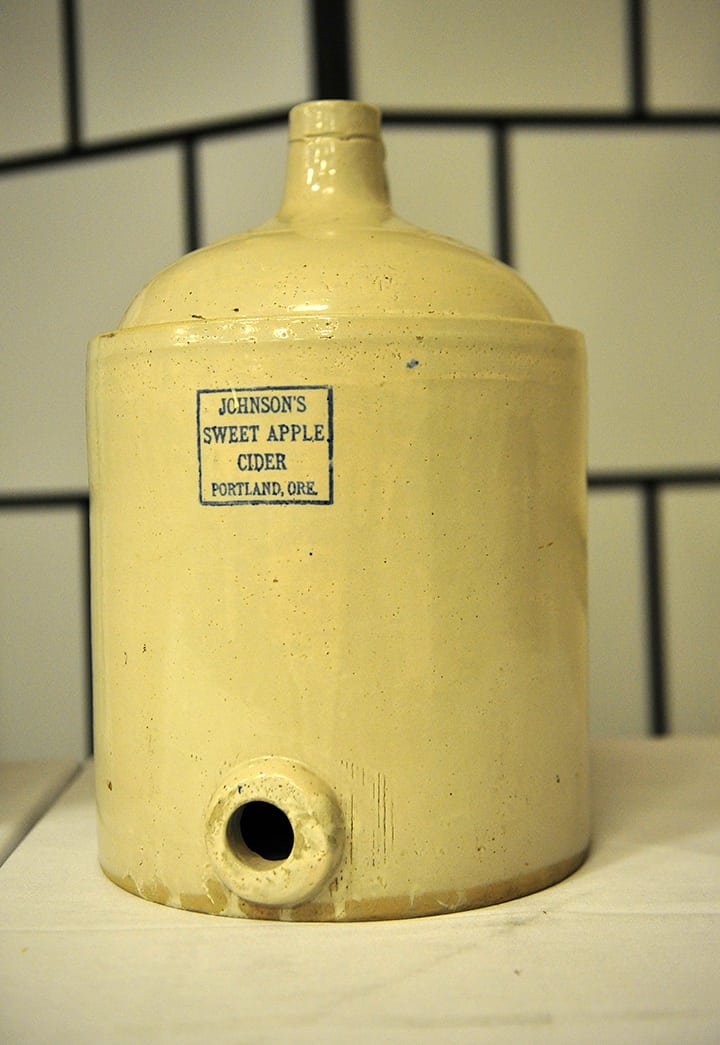
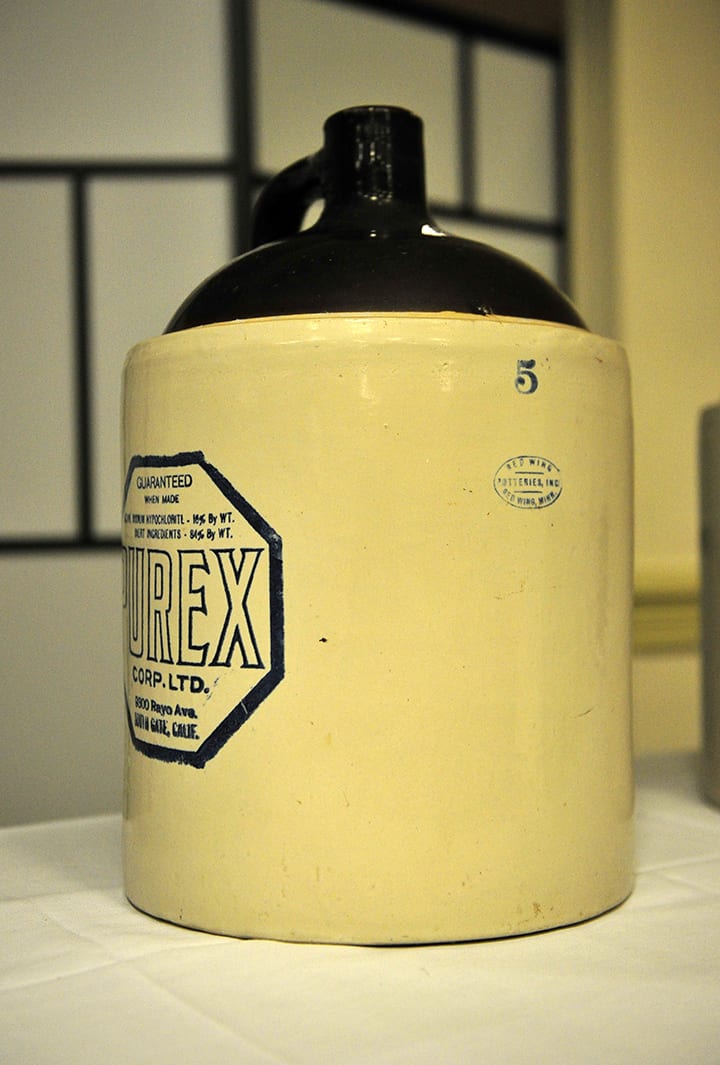
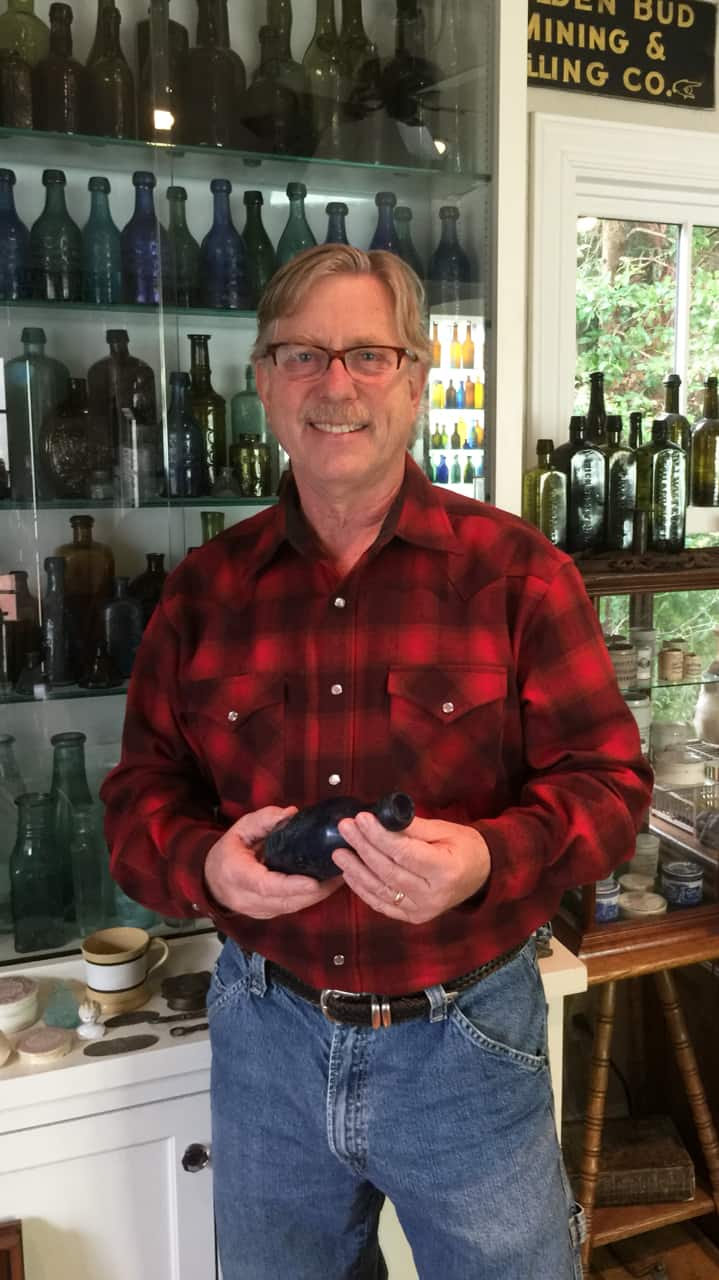

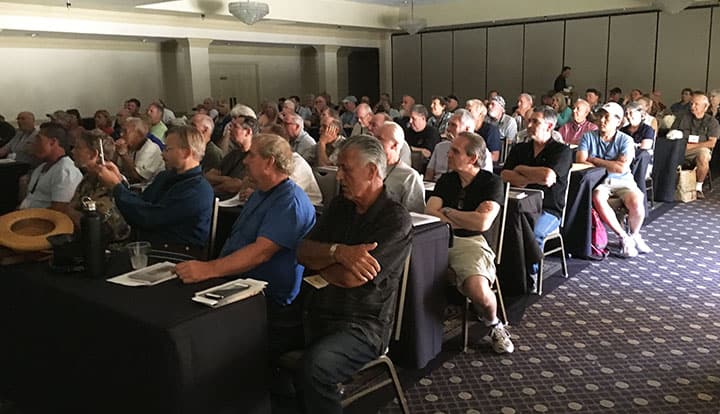
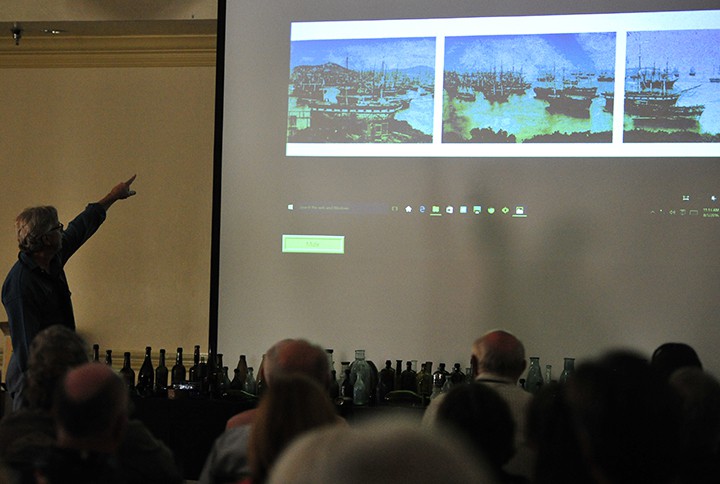
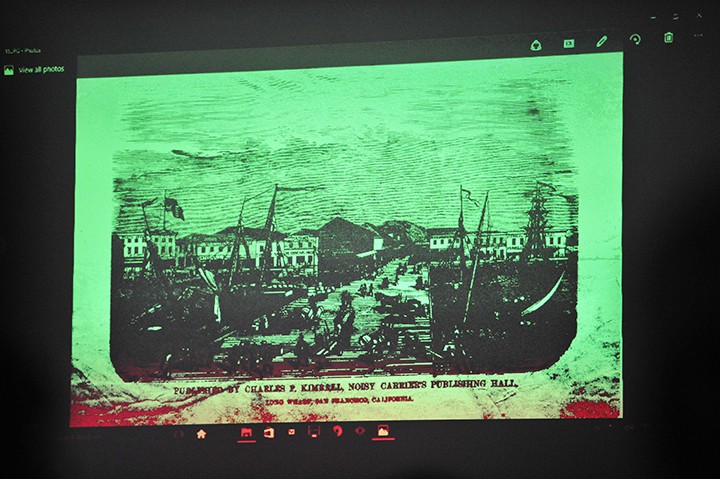
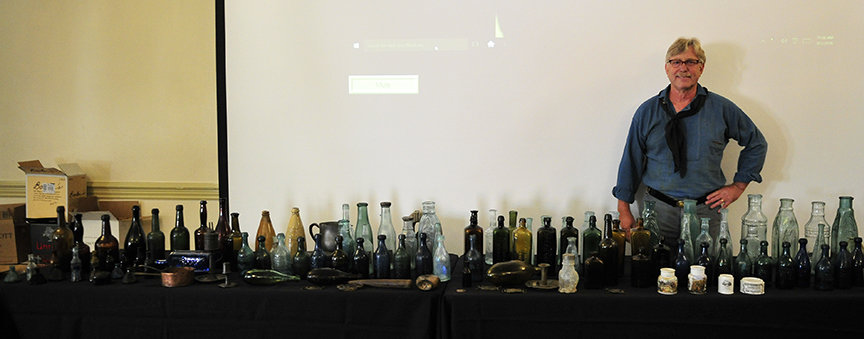
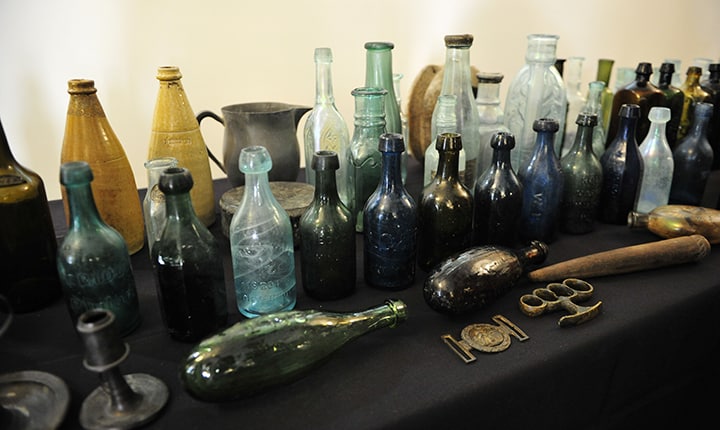
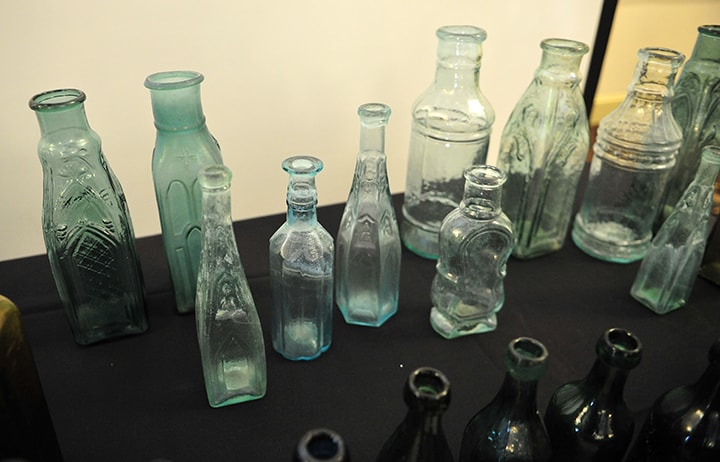

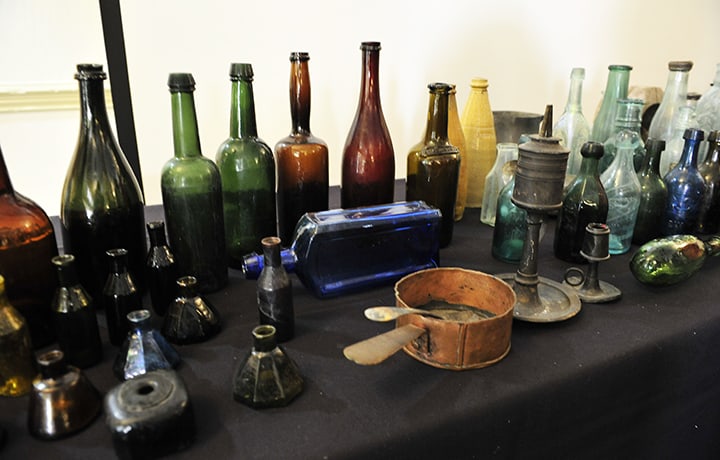
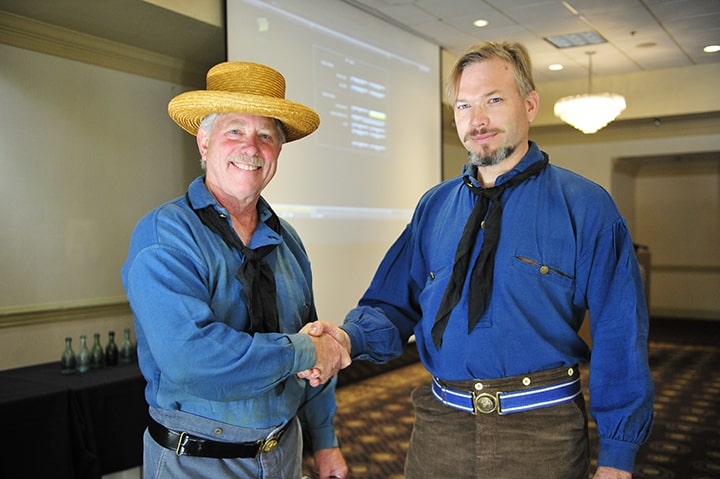

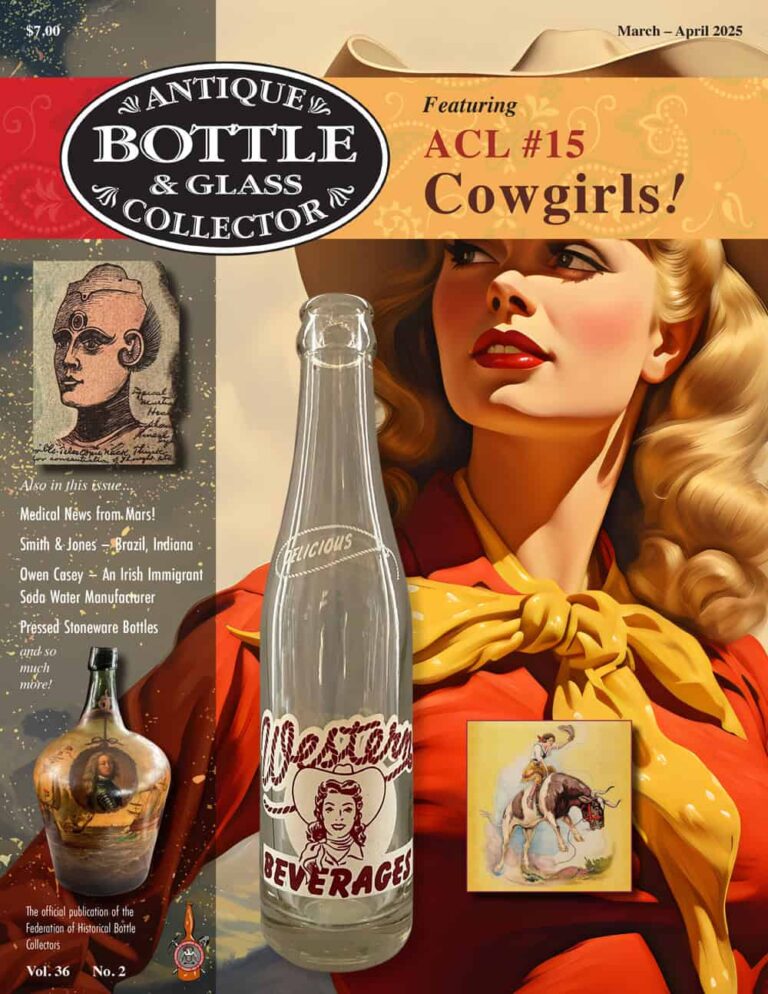
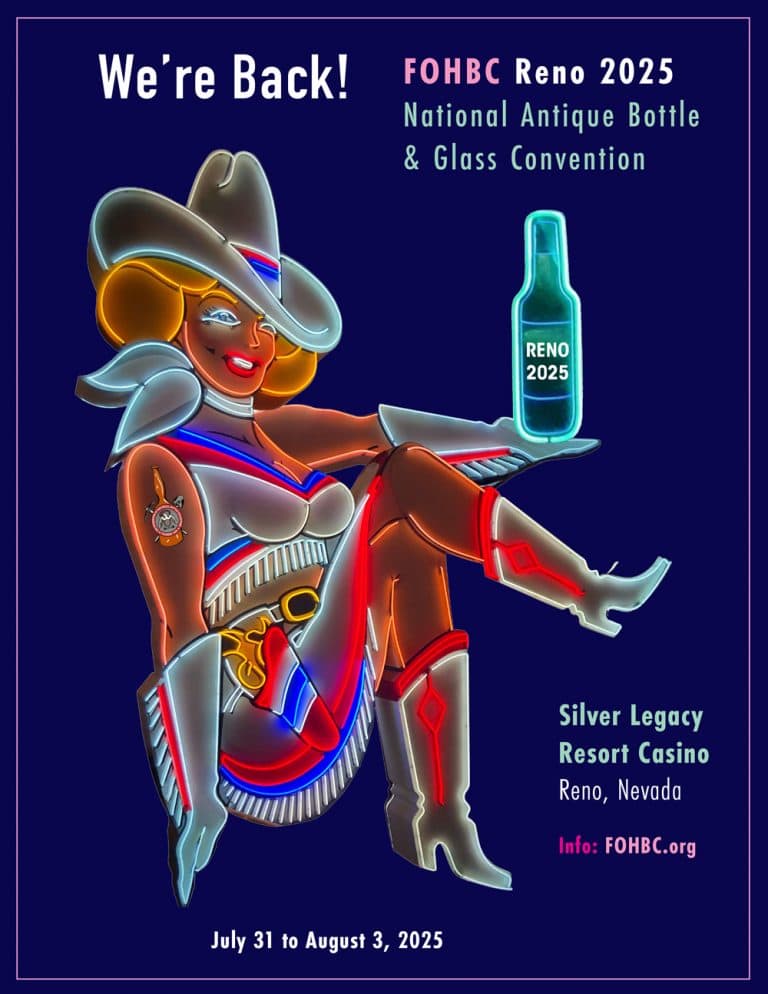


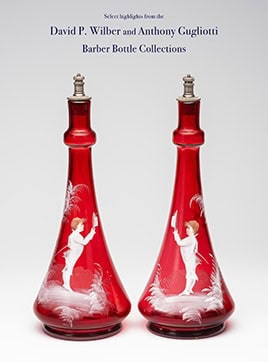


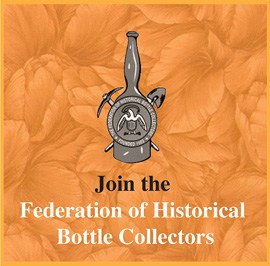
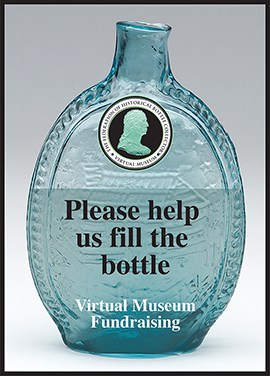
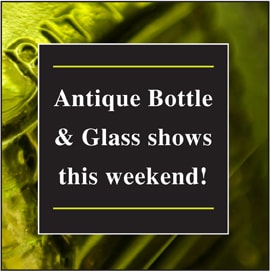
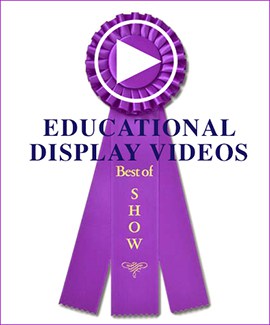
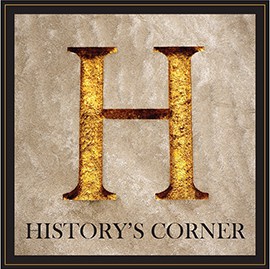
Leave a Reply
You must be logged in to post a comment.